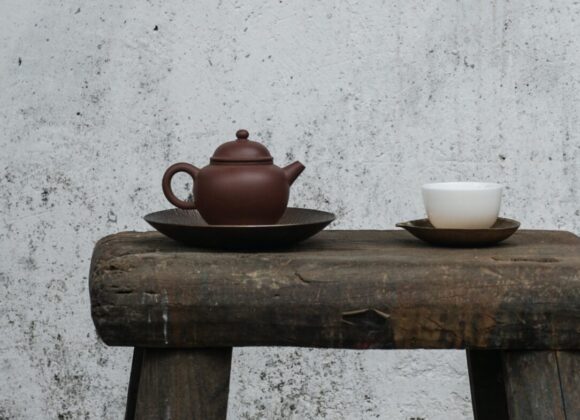Polypore fungi like Chaga (Inonotus Obliquus) are a unique type of fungi unlike fleshy mushrooms, most of the polypore mushrooms can be found even during dry weather or in the winter. Polypores can be easily distinguished from the other fungi by their typically hard exterior, usual “non-mushroom” shape and they usually grow on wood acting as wood de-composers. The question is, can Chaga mushrooms be eaten like any other?
Unlike many other fungi, Chaga starts growing from the inside of a tree, instead of developing on the surface. As it grows and matures, it protrudes from the tree. You’ll be able to recognize Chaga by its dark, almost black exterior. Looking like something has burnt on the tree. From the inside, it’s a rich orange-brown color with a corky texture.
Raw Chaga
Chaga in its raw form should not be eaten, nor will it provide you with the promised health benefits. Chaga is a hard, dense polypore mass, that’s properties need to be extracted. The extraction requires prolonged simmering or soaking. This process makes the beneficial components bioavailable to the human body – meaning the body is able to absorb the nutrients.
Traditionally, the polypore is broken up into small pieces, then boiled to make tea. The fungus is removed before drinking the tea.
Chaga is also commonly finely powdered, then eaten mixed into foods and liquids. As well as combined with binders to make a salve or medicinal application.
RELATED: Key things to know about Chaga
Preparing harvested Chaga
A very crucial step in preparing Chaga is drying and storing the fungus. The process of drying Chaga isn’t complicated, simply make sure not to let the temperature exceed 50 degrees Celsius. Feel free to use a dehydrator or dry them in an oven by keeping the oven door somewhat open for airflow, perhaps you’ll even find a dry, warm, well-ventilated spot in the house to leave the Chaga to dry safely. The drying process generally takes a few days, up to weeks if dried in the sun.
A tip from us is to start the drying process right after leaving. Set your car AC on warm, and set the chunks out to dry before you reach home.
CHAGAMUSHROOM.CO.UK TEAM
Make sure your environment is optimal for drying. The longer the process, the higher the risk of your Chaga growing mold.
Related: “How to dry Chaga and stay clear from mold?”.
A large part of Chaga’s longevity depends on how it is stored. The fungus is best to be kept in an airtight container in a cool, dry place. Exposure to sun, air, humidity, and other contaminants, unfortunately, affect the quality of your Chaga.
In addition to that, some insects are attracted to Chaga, so you want to keep it away from their reach. If you want to store Chaga for the long haul, consider vacuum-sealing it.
Another way to prolong the life of your Chaga is by freezing it. The freezer will insulate it against sun, heat, insects, and other contaminants. However, there is debate in the Chaga community over this issue, some people claiming that long-term freezing harms its nutritional value.
Stored properly, Chaga has a shelf life of one to two years.
Extraction and consumption of Chaga
Locked inside the chitin cell walls of Chaga are all the healthy bioactive ingredients, such as the beta-glucans. Chitin is the hardest all-natural material known to humankind, therefore indigestible without the right preparation.
This means one of the two following extraction processes is required to release these bioactive ingredients for human consumption.
1. Hot water extraction│Chaga tea
Hot water extraction is the most common, easiest, and cheapest method to prepare Chaga. Just like the traditional tea-making process, Chaga chunks or powder are steeped in hot water for a period of time, strained, and then drunk as tea.
When using this method, all the water-soluble components, such as the polyphenols and beta-glucans, will be present in the resulting extract. However, water-insoluble components, such as phytosterols, and betulinic acid will be missing. If somebody’s debating you on the taste of Chaga, keep in mind that a long brew tea from the nuggets tends to taste sweeter. We recommend you not to boil your Chaga, to learn more head over to “Does boiling Chaga ruin in?”.
2. Double Extraction│Chaga Tincture
Like with all tinctures, alcohol is used as the soaking agent for Chaga infusion. The mushroom is combined with alcohol and soaked for a set period of time, quite often months. Once it’s ready, the Chaga is removed, leaving a concentrated extract.
Generally, there is no heating or cooking involved. However, with fungi like Chaga, heating releases more nutrients and benefits. Recipes that include heating the Chaga are considered stronger, more potent options. Heating expands the cell walls of the fungi, allowing for more nutrients to become bioavailable and create a stronger healing potion.
A Chaga tincture, otherwise known as an extract, is the most concentrated way for Chaga to be eaten/ consumed. It is best used at the onset of colds, during seasonal swings, or to combat recurring immune-system issues.
Related recipe: Chaga tincture │Double extraction
Which part of Chaga should you use?
Sclerotium is a precious part of the superfood, containing high amounts of melanin. Sclerotium is the dark black often burnt-looking outer crust of the fungus. Chaga is even known as one of the highest natural melanin sources in the world. It turns out that melanin has high antioxidant levels due to the number of polyphenols it contains, meaning consuming the fungus will keep your cells healthy. In fact, Chaga has the highest Oxygen Radical Absorbance Capacity (ORAC) score of any superfood, ranking three times higher on the scale than acai berries. The research studies are ongoing to discover whether these advantages can be used as the basis for establishing anti-cancer medications from “The king of mushrooms”.
That’s why we recommend our readers to buy Chaga chunks instead of powder. It’s easy to determine whether the sclerotium is still intact on the nuggets.
Also don’t forget, the little chunks can be reused up to 6 times without losing their potency and long brewed tea from the nuggets tends to taste sweeter.
Related: Does Chaga increase melanin?










